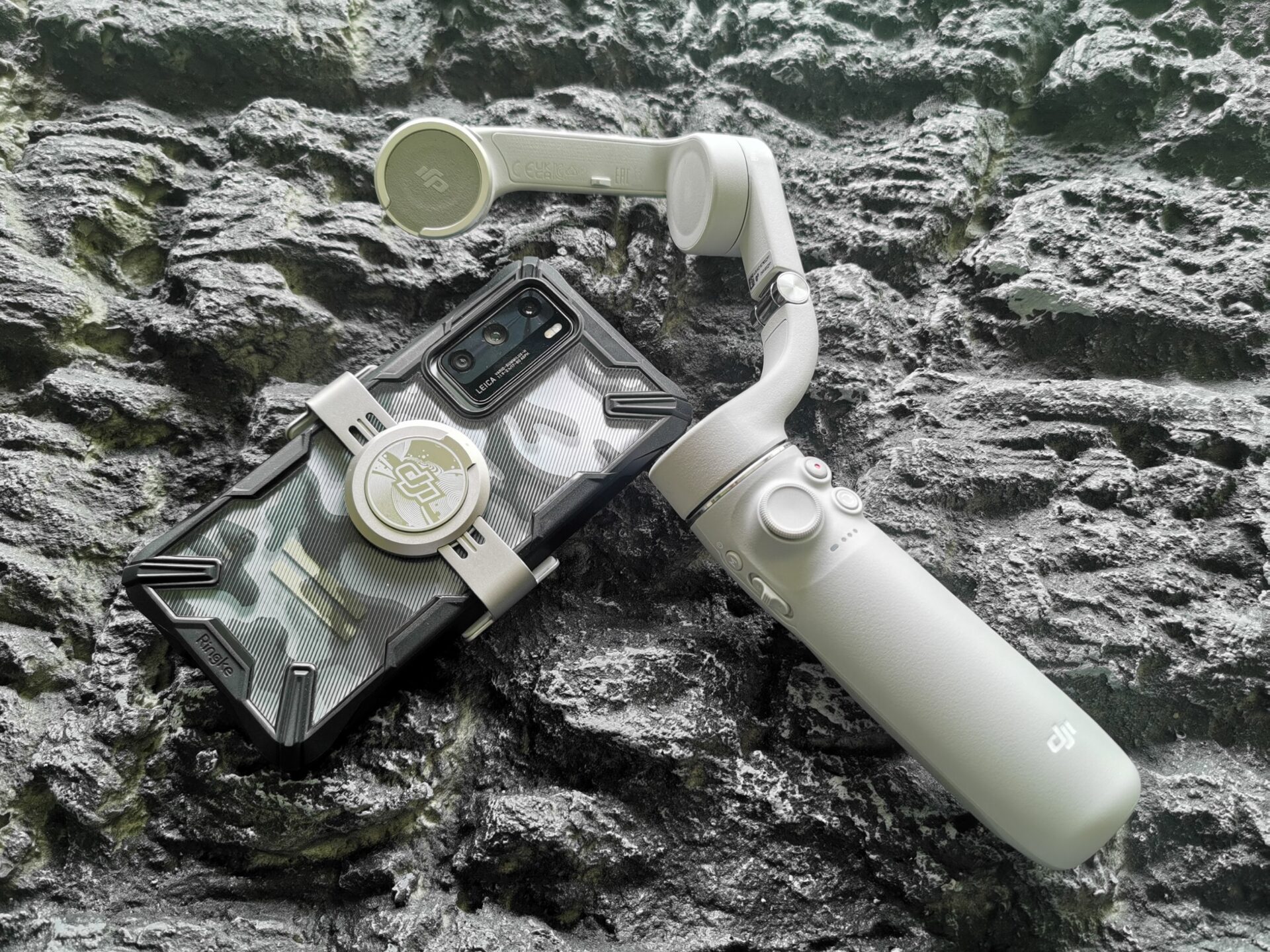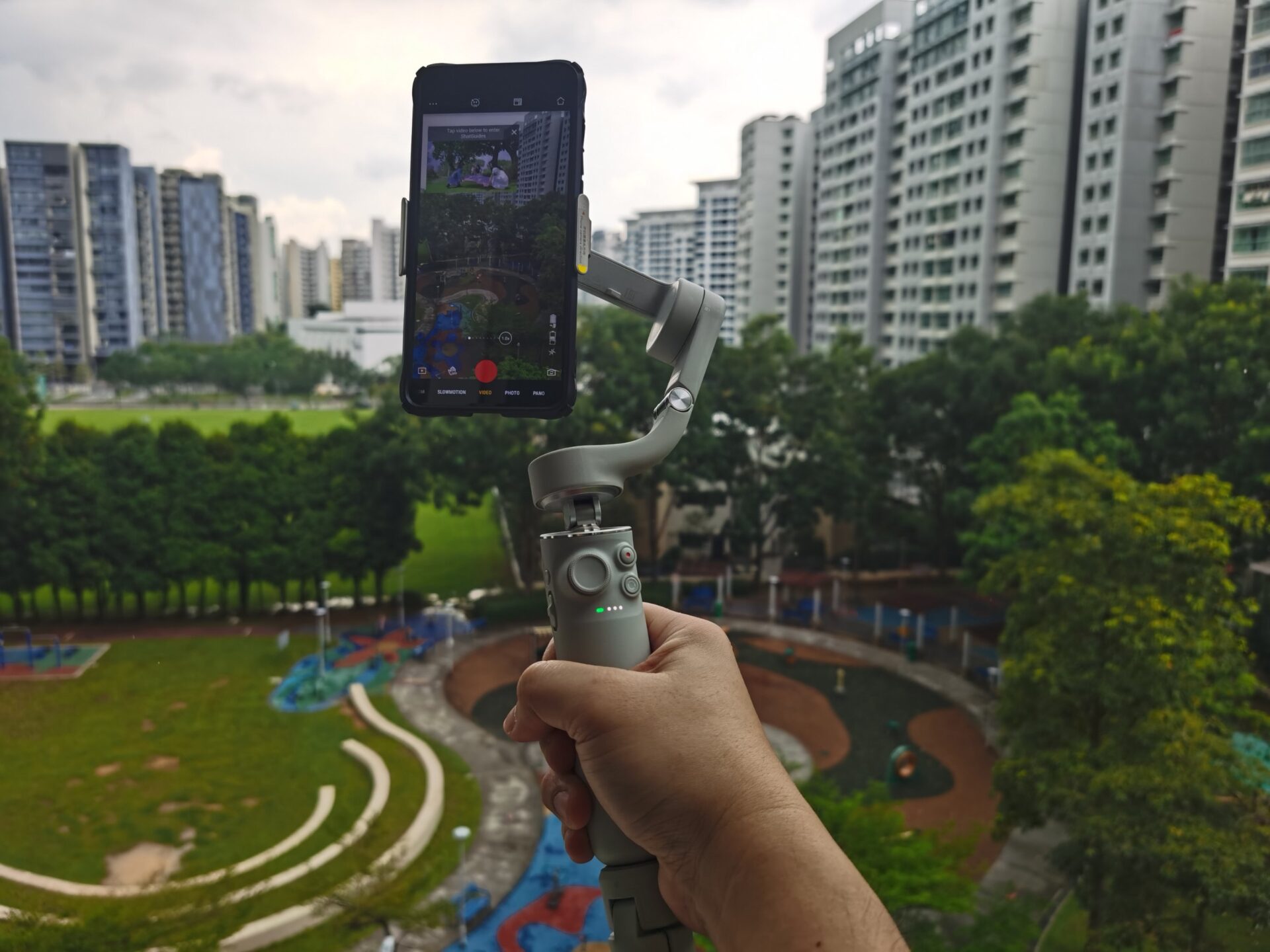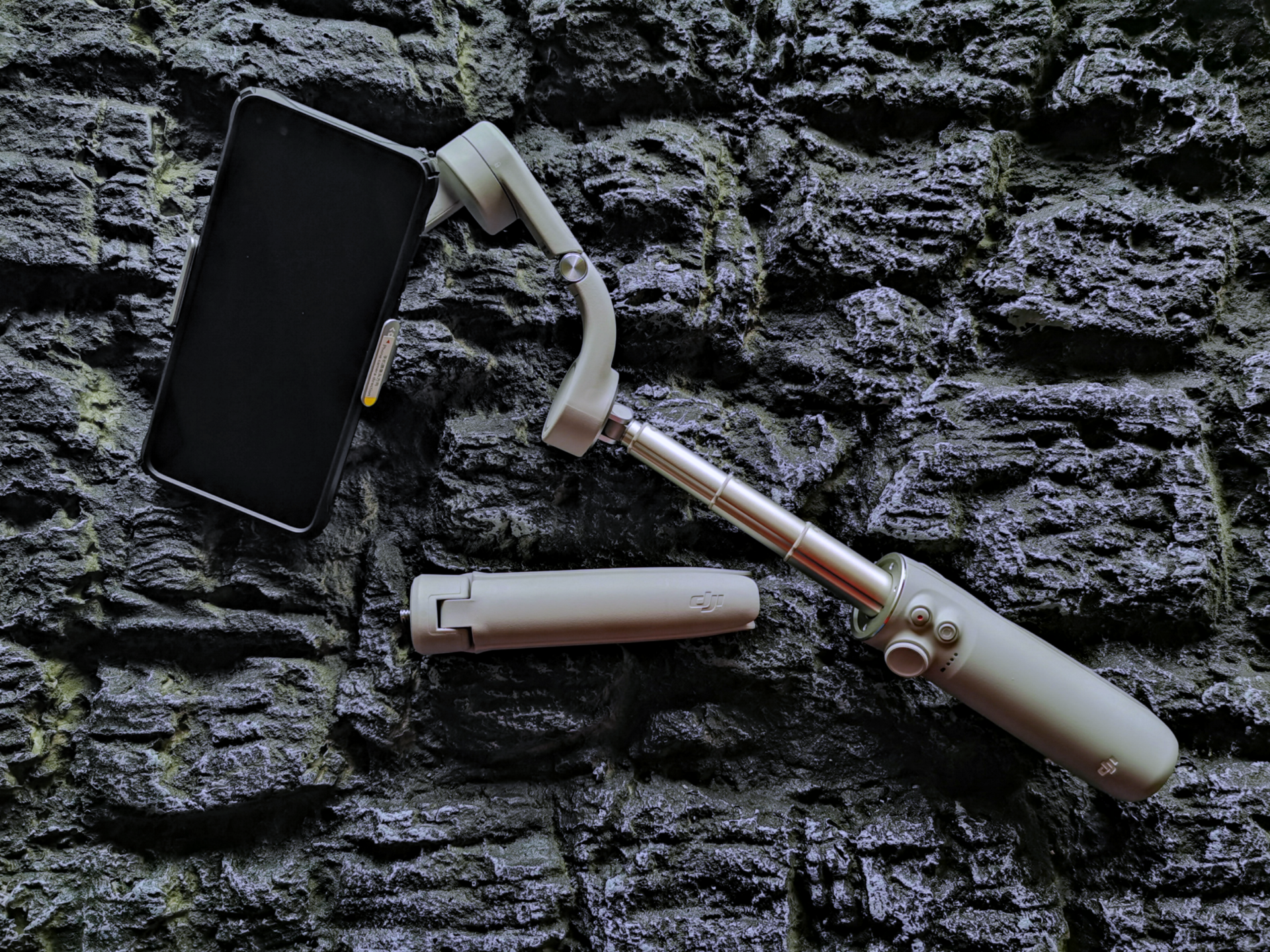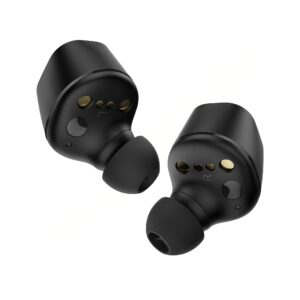
DJI OM 5 smartphone gimbal with the magnetic clamp. PHOTO: Wilson Wong
With its successes in drone technology, especially in-camera stabilisation, it is of little wonder DJI now sells gimbals for smartphones to help boost already improving video quality today.
The DJI OM 5 has taken some of the best features of the earlier OM 4 and improved it. The new gimbal is now more pocketable thanks to its smaller grip and the detachable magnetic clamp. I can easily slip the gimbal into my messenger bag along with my mirrorless camera and lenses, with space to spare.

Much smaller than its predecessors and easier to pack into a bag. PHOTO: Wilson Wong

The telescopic arm makes it easier to shoot selfie videos. PHOTO: Wilson Wong
The gimbal is pretty straightforward to use. Just place the phone into the clamp, attach it magnetically and switch on the gimbal. The smartphone and gimbal are linked via Bluetooth through the DJI Mimo app.
To record, just push the red button and the app will start recording a video. You can also zoom in and out or change the orientation of the phone using the buttons on the gimbal.
During my tests, I set up the app to activate face tracking whenever the front-facing camera is switched on. This helps to get the right focus on what’s usually the most important – people’s expressions.
The gesture feature also makes it easier for me to start and stop recording a selfie vlog. I just have to hold my palm up towards the camera and the gimbal automatically tracks my face as I record the video clip.
If you’re short on ideas for a video, the DJI Mimo app also offers suggestions. Its Story mode starts you off by providing instructions on the shots to capture.
It helps you add them to the video editing timeline automatically, even creating compelling effects such as the Hitchcock zoom and spin effect. Yes, pretty cool to share on social media.
Creating accurate panoramas is usually tough because it’s not easy to keep a camera stable while sweeping from side to side. The DJI OM 5 helps by automatically moving the smartphone in steps while taking shots intermittently.
In the same way, you can create time-lapse video clips easily. Just remember to put the gimbal on a tripod or a stable platform before starting the panorama or time-lapse shot.
There are a few things to look out for when using the OM5. When placing the gimbal on the table or doing a time-lapse and hyper-lapse shot, remember to level the gimbal mechanism parallel to the horizon before switching it on. Otherwise, it will cause undue strain on the motors, resulting in vibrations.
The OM 5 isn’t perfect, to be fair. Its shorter grip may have helped with its pocketability but it is not as comfortable as the OM 4’s.
Plus, with some phones, such as the Huawei P40, the ultrawide-angle lens will capture part of the gimbal’s stabiliser arm during video filming. Do test the gimbal out with your own phone before making a purchase.
The new gimbal does not come cheap, either. At S$219, it is more costly than, say, FeiyuTech’s vlog pocket2, which doesn’t cost half of that on popular shopping sites.
That said, the OM 5 does hold its own despite its higher price. It is better built, has an innovative magnetic clamp, a better app experience and a telescopic arm for better selfies. For those serious about smartphone imaging, the price that DJI is asking for might be worth paying.








